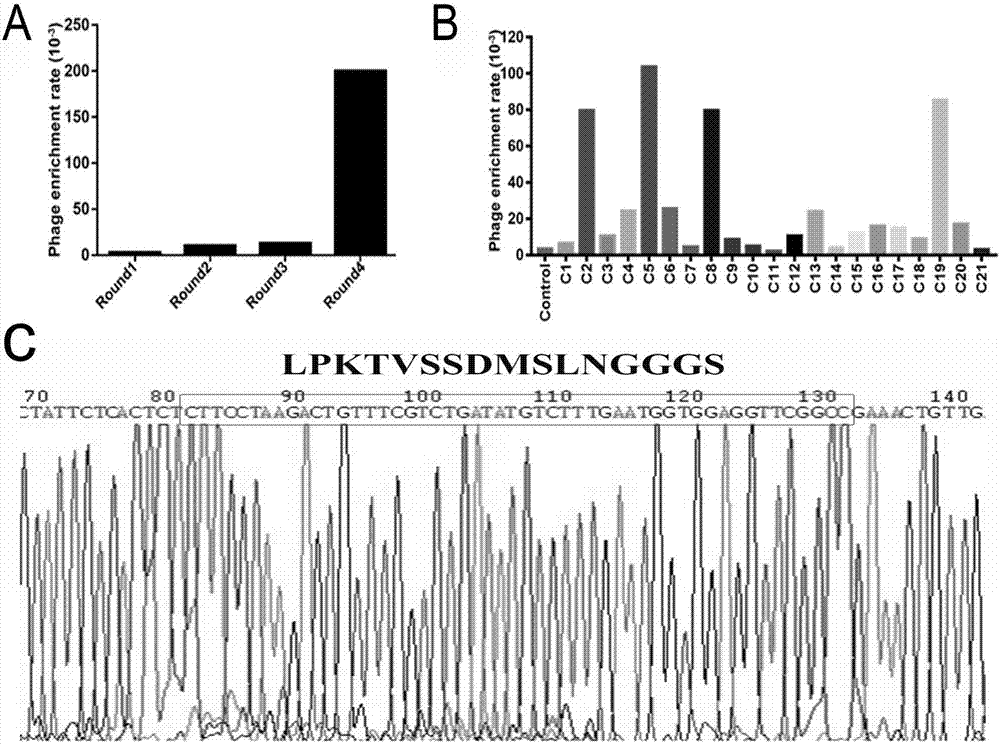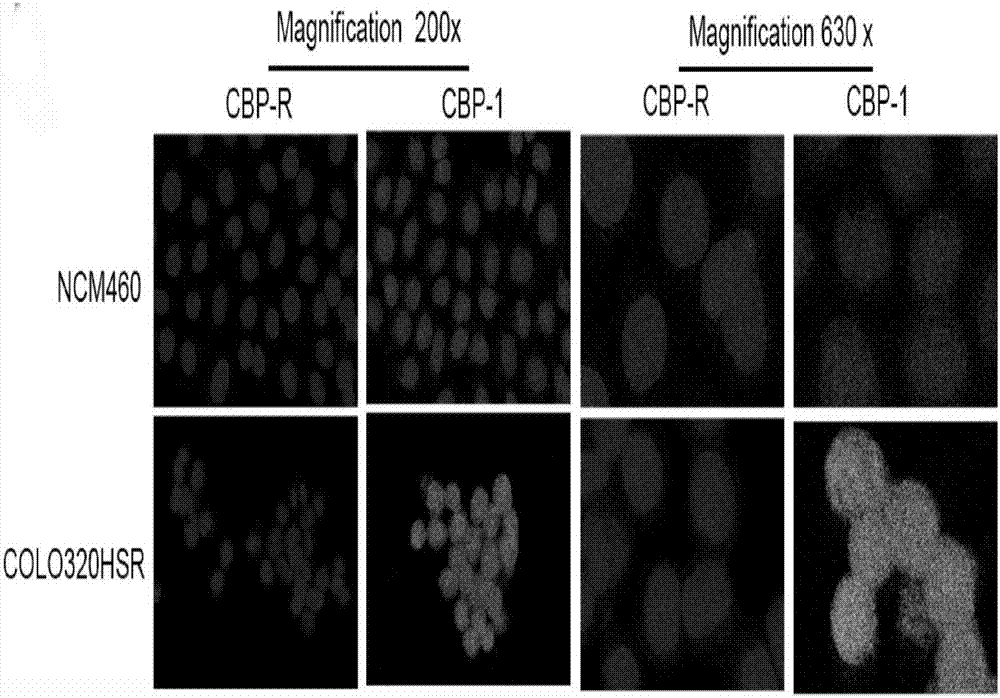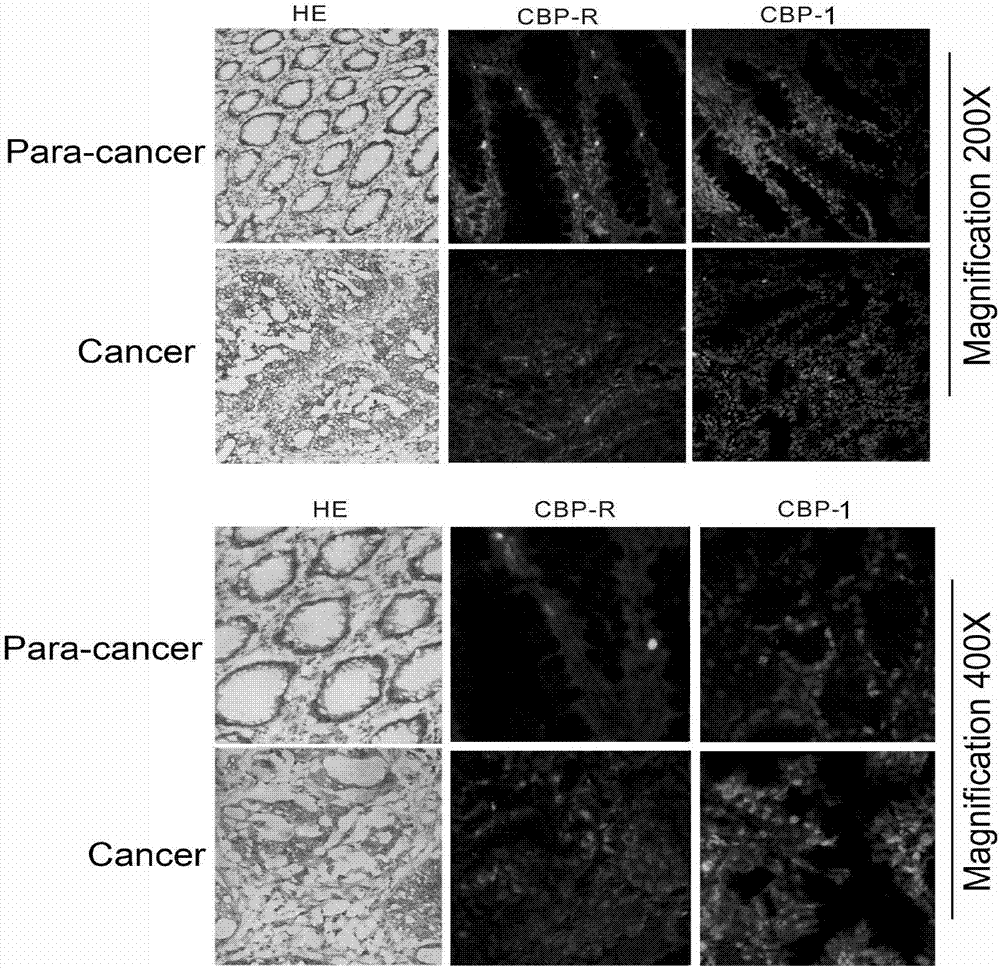Method for screening polypeptide specifically bound with human colon cancer cells and application of polypeptide
A colon cancer cell and peptide-binding technology, applied in the medical field, can solve the problems of high price, low penetrating power, strong immunogenicity, etc., achieve the effect of small molecular weight and overcome immune allergic reaction
- Summary
- Abstract
- Description
- Claims
- Application Information
AI Technical Summary
Problems solved by technology
Method used
Image
Examples
Embodiment 1
[0020] 1. Screening method:
[0021] The screening method for specific binding polypeptides on the surface of colon cancer cells in this embodiment includes the following steps:
[0022] Step (1): Use the whole cell screening method to incubate the random dodecapeptide library phage clones with colon cancer cells, discard the clones that have not combined with the colon cancer cells, and combine them with the colon cancer cells. Amplification of combined clones;
[0023] Step (2): Repeat step (1) 4 times to maximize the enrichment of phage clones that bind to the colon cancer cells to obtain clones that have a higher affinity for colon cancer cells, and then expand;
[0024] Step (3): Incubate the amplified clones with normal colonic epithelial cells, perform negative screening, and remove non-specific clones that bind to normal cells.
[0025] Step (4): sequence the cloned strain after the final amplification, and analyze the polypeptide sequence.
[0026] The polypeptide sequence has ...
PUM
 Login to View More
Login to View More Abstract
Description
Claims
Application Information
 Login to View More
Login to View More - R&D
- Intellectual Property
- Life Sciences
- Materials
- Tech Scout
- Unparalleled Data Quality
- Higher Quality Content
- 60% Fewer Hallucinations
Browse by: Latest US Patents, China's latest patents, Technical Efficacy Thesaurus, Application Domain, Technology Topic, Popular Technical Reports.
© 2025 PatSnap. All rights reserved.Legal|Privacy policy|Modern Slavery Act Transparency Statement|Sitemap|About US| Contact US: help@patsnap.com



